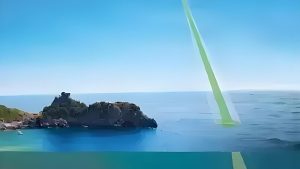Coastal regions face numerous challenges, including erosion, habitat loss, and climate change. LiDAR technology plays a pivotal role in monitoring these changes and supporting effective coastal management strategies. This article explores how LiDAR is being utilized to safeguard coastal environments.

The Importance of Coastal Monitoring
Coastal areas are dynamic environments that require continuous monitoring to manage resources effectively and protect ecosystems. Traditional methods of assessing coastal changes can be labor-intensive and may lack the accuracy needed for comprehensive analysis.
Applications of LiDAR in Coastal Monitoring
- Erosion Assessment: LiDAR can map coastal topography and track changes over time, providing essential data on erosion patterns. This information is crucial for developing strategies to mitigate coastal erosion and protect infrastructure.
- Sediment Transport Studies: By mapping sediment movement along coastlines, LiDAR helps researchers understand how sediment affects habitats and coastal resilience. This data is vital for effective beach nourishment and habitat restoration projects.
- Habitat Mapping: LiDAR technology can accurately delineate different coastal habitats, such as wetlands, dunes, and estuaries. This information aids conservation efforts and helps identify areas in need of protection.
Successful Projects
Numerous coastal management projects have successfully utilized LiDAR data. For instance, in the Gulf of Mexico, LiDAR has been instrumental in assessing coastal erosion and guiding restoration efforts for degraded habitats. The detailed maps produced have informed policymakers and stakeholders, leading to more effective management practices.
Conclusion
LiDAR technology is an invaluable tool for coastal monitoring and management, offering precise data that enhances our understanding of dynamic coastal environments. As climate change continues to impact coastlines, the role of LiDAR will be critical in developing adaptive management strategies.


